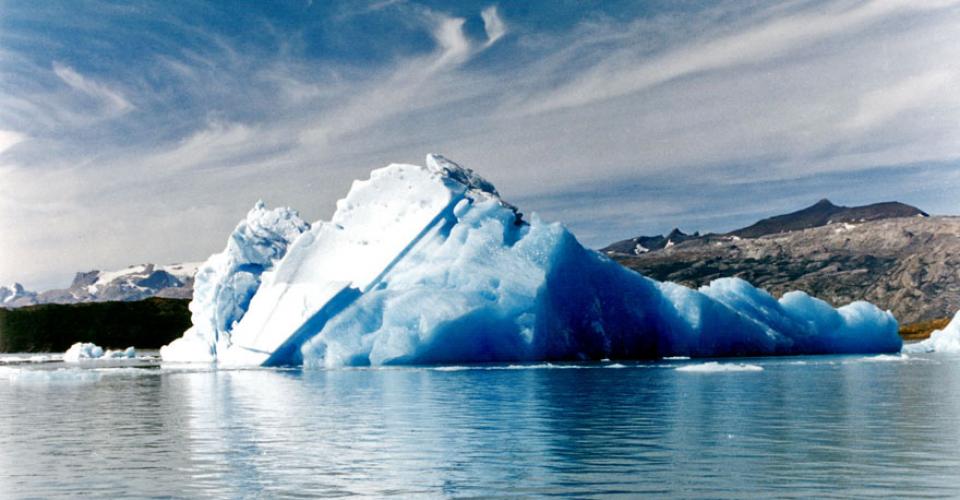Reigniting curiosity: a voyage to the Sub-Antarctic Islands
22/02/2016CHERIE FENEMOR writes about her experience as the 2016 ‘Educator at Sea’ on board the Young Blake Expedition this year.

Above: Educator at Sea Cherie Fenemor (Freyberg High School) and Young Blake Expedition voyagers Aidan Braid (Logan Park High School) and Guy McDonald (Timaru Boys High School) collect seaweed samples in Smith Harbour. Photo: Brendon O'Hagan.
Following his successful sailing career, the late Sir Peter Blake set off to journey to ‘pulse points’ of the world on the Seamaster to show the impacts that humans are having on the environment, and to educate and inspire the next generation. The Sir Peter Blake Trust aims to continue his legacy with Young Blake Expeditions, where students have the opportunity to voyage across oceans to remote parts of our country, learning how and why these places are good indicators of global climate change.
This year I was fortunate to be selected as the Sir Peter Blake Trust Environmental Educator, and have just returned from an awe-inspiring two week Young Blake Expedition to the sub Antarctic Auckland Islands onboard the HMNZS Otago. The expedition took 14 environmentally minded students as well as DoC staff, scientists, an engineer, a media reporter, a doctor, and programme directors, to gather baseline data about the marine and terrestrial environments of the Auckland Islands.
 Young Blake Expedition student voyager Oxana Repina (Rutherford College) holds a sample on board the University of Otago research vessel Polaris II. Photo: Brendon O'Hagan.
Young Blake Expedition student voyager Oxana Repina (Rutherford College) holds a sample on board the University of Otago research vessel Polaris II. Photo: Brendon O'Hagan.
After a day and night crashing and rolling through the Southern Ocean, there are few words to describe the excitement and awe I felt seeing the Auckland Islands for the first time. After a long wait and much anticipation, we were finally there. These islands are moody and seemingly desolate, yet support a rich biodiversity, due to their location within the subtropical convergence zone, the boundary between the cold sub Antarctic waters and the warmer sub-tropical waters.
 Above: Young Blake Expedition student voyager Isla Christensen (Karamu High School) views a plankton sample on board a NZ Navy RHIB. Photo: Brendon O'Hagan.
Above: Young Blake Expedition student voyager Isla Christensen (Karamu High School) views a plankton sample on board a NZ Navy RHIB. Photo: Brendon O'Hagan.
The aim of the expedition was to collect baseline data on plankton, seaweed, coralline algae, soil microbes and intertidal organisms. The samples collected will be analysed by scientists around the world, and put together with qualitative observations to form a picture of what is present. This is important because if we are going to see impacts of climate change on ecological communities, the sub Antarctic will be one of the first places to experience change. Thus, as these islands have not been comprehensively studied, we need to know what is present first, in order to determine the rate and scale of change, and the effect that it is having.
 Left: Young Blake Expedition student voyager Sam Kilsby (Otago Boys High School) mounts a seaweed specimen on board HMNZS Otago. Photo: Brendon O'Hagan.
Left: Young Blake Expedition student voyager Sam Kilsby (Otago Boys High School) mounts a seaweed specimen on board HMNZS Otago. Photo: Brendon O'Hagan.
Once the samples and scientific data were collected, we were able to spend some time exploring the history of human endeavour on the islands, and the biodiversity hotspot of the pest free Enderby Island.
We took a trip to the World War Two coastwatcher’s hut and lookout at Ranui Cove, where I was mesmerised by the panoramic views above the Ranui lookout. However what was more breath taking was to look out and think of those that had been there before me – to see the passage the survivors of the Invercauld ship wreck rowed in their seal skinned canoe, in search of food supplies, to Rose Island; and to think of all the months the coastwatchers spent here, watching, waiting.
The next day we had an early morning start, to spend the most time possible on Enderby Island. Unfortunately we were delayed hour after hour, due to high wind speeds making small boat transfers unsafe. Finally, at 2pm, after I had pretty much given up on the idea of getting to shore, the winds abated and we made the short crossing to the island, and it worth the wait. Although our time was limited, we were treated to sea lions playing, Southern Royal Albatross swooping and soaring, megaherbs flowering and an Auckland Island pipit flitting through the vegetation. Upon leaving Enderby Island we set off home, back across the Southern Ocean.
Overall what the Sir Peter Blake Trust and the expedition offer is a chance for students to engage with science in the real world, to instil their passion and show them that they can make a difference. As well as lifting their skills and knowledge the expedition builds their leadership so they have the courage to go out and make change in their communities.

Above: Hooker's sea lion pup, Enderby Island. Photo: Brendon O'Hagan.
It has provided me with a professional development experience like no other – one that has reignited my curiosity and strengthened my desire to make a difference. However, for us all the journey has really only just begun. The students will set off on a mission to share their knowledge with their communities and I will spend the remainder of the term developing resources for secondary schools, based on the Southern Ocean and Auckland Islands.
You too can get involved in a number of ways. Firstly you can encourage your year 11-13 students to attend the annual Youth EnviroLeaders’ Forum (YELF) run by the Sir Peter Blake Trust (applications close on February 26 2016). Attending this forum gives students eligibility to apply for future Young Blake Expeditions. You too can apply to become the Sir Peter Blake Trust Environmental Educator, participating in an expedition and going on to develop resources. Or, you can use the resources that will be developed by myself, or those developed by past educators, in your classroom. They are available for download on the Trust website.
In the words of the late, great Sir Peter Blake: “The hardest part of any big project is to begin. We have begun - we are underway - we have a passion. We want to make a difference. We hope that you and as many of your friends as possible will join us.”
- Cherie Fenemor.
Read more about the Environmental Educator Award here.
You might also like to read:
- To the Ice
- Gene editing - a train coming down the track
- The gene editing future is here - Royal Society NZ panel formed
- The future of farming - teachers learn about agriculture careers
- The exponential generation - student workshops look to the future
- Network of inspiration: Assoc. for Women in Science

























Post your comment
Comments
No one has commented on this page yet.
RSS feed for comments on this page | RSS feed for all comments